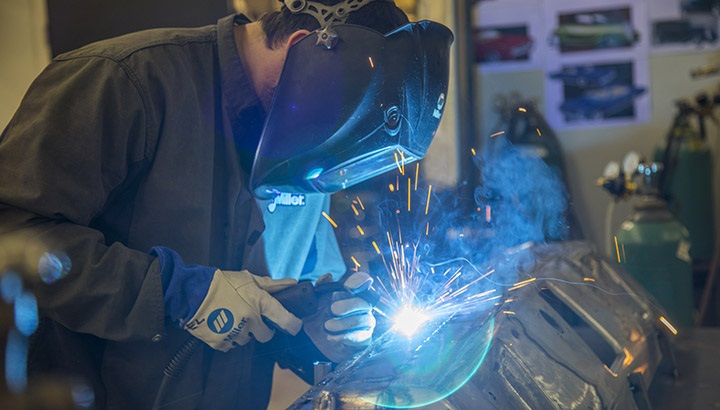Welding consumables are among the most important supplies that every welder needs. They play a crucial role in ensuring that the welding job is completed successfully and contribute to the strength and quality of the weld. However, many welders often compromise on the quality of the consumables purchased in favor of other more significant expenses.
This could be a costly mistake because welding consumables can make or break the weld quality and the welding process itself. Whether you plan to practice MIG, TIG or even stick welding, it’s crucial to buy high quality welding supplies for your welding kit.
To better understand why this is necessary, let’s take a closer look at three of the most important welding supplies and consumables used by welders across the world — namely welding wires, electrodes and flux.
Welding Wires
Welding wires are essential welding supplies that are used as continuous filler materials in various welding processes like Gas Metal Arc Welding (GMAW) and Flux-Cored Arc Welding (FCAW). They have one primary purpose — to provide the molten metal required to create the weld joint between metals.
Types of Welding Wires
There are different types of welding supplies in this category, such as:
- Solid Wires: These welding wires are used in MIG and TIG welding. They have no flux cores and are used with a shielding gas during the process.
- Flux-Cored Wires: These are hollow wires with flux material in the core to protect the weld pool from atmospheric contamination.
Factors to Consider When Buying Welding Wires
Before you select welding wires for your welding supplies kit, you need to account for factors such as:
- The base metal used in the welding process
- The type of welding process to be used
- The thickness and configuration of the metal workpieces
- The welding position to be used
Welding Electrodes
Also known as welding rods, welding electrodes are consumable fillers that help create strong and permanent joints between metals. The purpose of welding electrodes is quite similar to that of welding wires; they carry the electric current needed to generate the arc and provide a stable flow of molten metal that can fuse the metal workpieces together in the weld pool.
Types of Welding Electrodes
There are different types of welding supplies in this category, such as:
- Covered Electrodes: These electrodes have a metal core and are coated in flux to protect the metals in the weld pool.
- Tungsten Electrodes: These electrodes are made of tungsten and are exclusively used in TIG or tungsten inert gas welding.
- Specialized Electrodes: Specialized electrodes are designed for specific applications like welding stainless steel or other alloys and exotic metals.
Factors to Consider When Buying Welding Electrodes
Before you select welding electrodes for your welding supplies kit, you need to account for factors such as:
- The base metal that is being welded
- The type of welding technique
- The design and thickness of the joint
- The environmental conditions in the welding area
Flux
Welding flux is a mix of different chemical compounds, minerals and alloys. It is used to protect the molten materials in the weld pool and prevent atmospheric contamination of the weld, thereby improving the weld quality and facilitating the removal of impurities like oxides and other non-metallic inclusions.
Types of Flux
There are different types of welding supplies in this category, such as:
- Slag-Forming Flux: This type of flux is used in flux-cored and even flux-coated electrodes. It melts and forms a protective layer of slag in the weld pool when it cools.
- Shielding Flux: This is used in submerged arc welding and similar processes, where the welding arc is entirely immersed in the flux to prevent atmospheric contamination.
Factors to Consider When Selecting Flux
Before you select the flux material for your welding supplies kit, you need to account for factors such as:
- The type of welding process used
- The base metal workpieces
- The environment in which the welding takes place
- The level of post-welding cleaning that can be done
Conclusion
You should never compromise on the quality of these welding supplies because they influence the strength and durability of the welded joints significantly. Whether you’re practicing MIG, TIG, or stick welding, investing in premium welding supplies is a crucial part of the process. By prioritizing the quality of welding supplies, you can ensure consistent and reliable welding results.

